Photography, at its core, is about capturing moments. When those moments involve the dynamic and vibrant movements of dance, especially within the rich cultural tapestry of India, the challenge becomes as thrilling as it is complex. Indian dance is a vivid expression of life, embodying tradition, emotion, and storytelling. As a photographer, whether you’re a beginner or at an intermediate level, capturing the essence of Indian dance requires a blend of technical skill, cultural understanding, and creative vision. This comprehensive guide will take you through essential tips and strategies for photographing dance in India, ensuring you can convey the beauty and energy of these traditions through your lens.
Understanding Indian dance
Before diving into the technical aspects of photography, it’s crucial to have a grasp of what you’re capturing. Indian dance is an umbrella term that encompasses a variety of classical and folk dances, each with its own unique style, costumes, and music. The classical forms include Bharatanatyam, Kathak, Kathakali, Manipuri, Odissi, Kuchipudi, and Mohiniyattam, while folk dances feature Bhangra, Garba, Dandiya, and many others. Each dance form tells a story, often rooted in mythology, religion, or social and cultural practices.

1. Research and Respect
Research: Before you photograph any dance form, take the time to understand its origins, significance, and unique elements. This knowledge will not only help you anticipate movements and moments, but also ensure you approach your photography with the respect and sensitivity these cultural expressions deserve.
Respect: Show respect for the dancers and their art. Always ask for permission before photographing rehearsals or performances, especially in more traditional settings. Understanding and adhering to cultural norms and etiquettes is paramount.

2. Technical preparation
Camera Settings: Dance photography often requires fast shutter speeds to freeze motion (1/200th of a second or faster), a higher ISO to compensate for low light conditions without introducing too much noise, and a wide aperture (low f-number) to allow more light into the camera. However, these settings can vary based on the lighting and the effect you want to achieve.
Lenses: A fast lens (f/2.8 or wider) is ideal. A zoom lens (24-70mm or 70-200mm) can be incredibly versatile, allowing you to capture both wide scenes and close-up expressions without intruding on the performance space.
Lighting: Natural light is preferable, but not always available, especially in indoor performances. Understand the lighting conditions of the venue beforehand and plan accordingly. If using artificial lighting, ensure it’s subtle and does not disrupt the performance or audience.
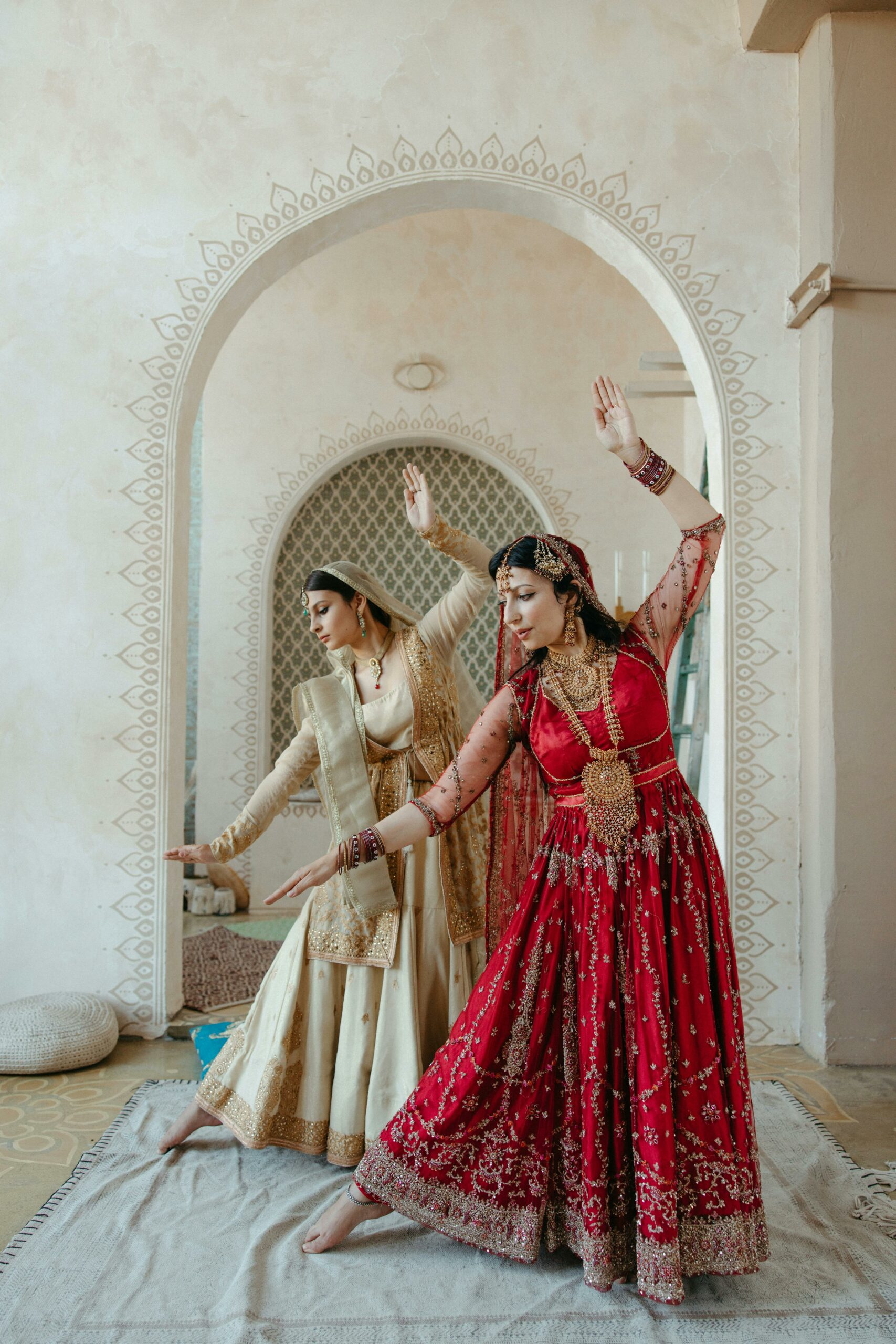
3. Composition and Framing
Capturing movement: Experiment with both freezing movements and using slower shutter speeds to create motion blur, conveying the dynamism of the dance.
Angles and Perspectives: Try different angles to capture the essence of the dance. Low angles can emphasise the grandeur and elevation of the dancers, while high angles can provide an overview of the formations and patterns.
Background and Context: Be mindful of the background. A cluttered background can distract from the subject. If you cannot change your position, use a wider aperture to blur the background. Including elements of the venue or audience can add context and atmosphere to your shots.
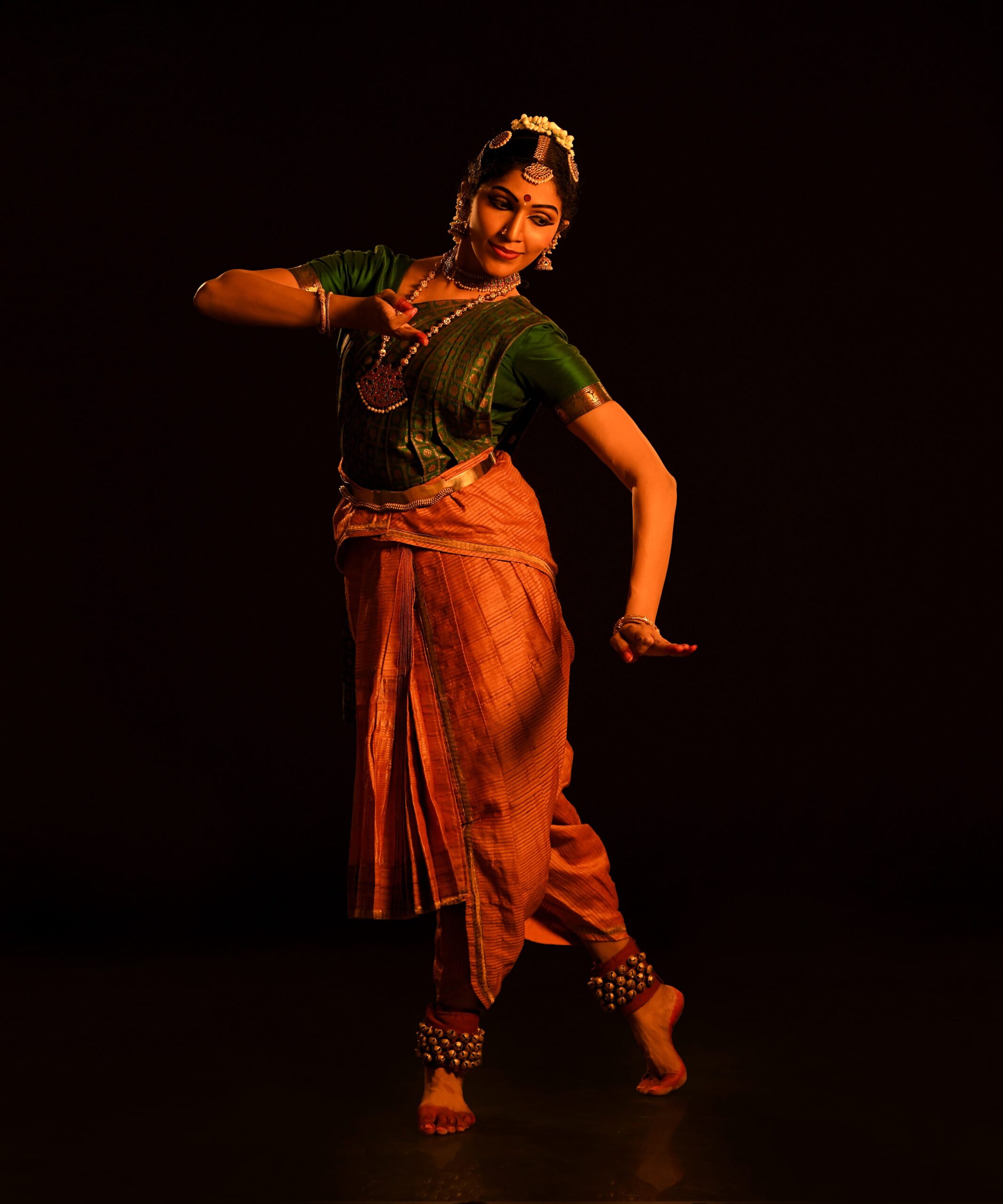
4. Emotional connection and Storytelling
Facial expressions and Emotions: Indian dance is rich in facial expressions that convey the narrative of the dance. Focus on capturing these expressions, as they are key to the story being told.
Moments and Details: Look for the subtle moments – a glance, the tension in a hand, the intricate footwork. These details often tell as much of the story as the broader scene.
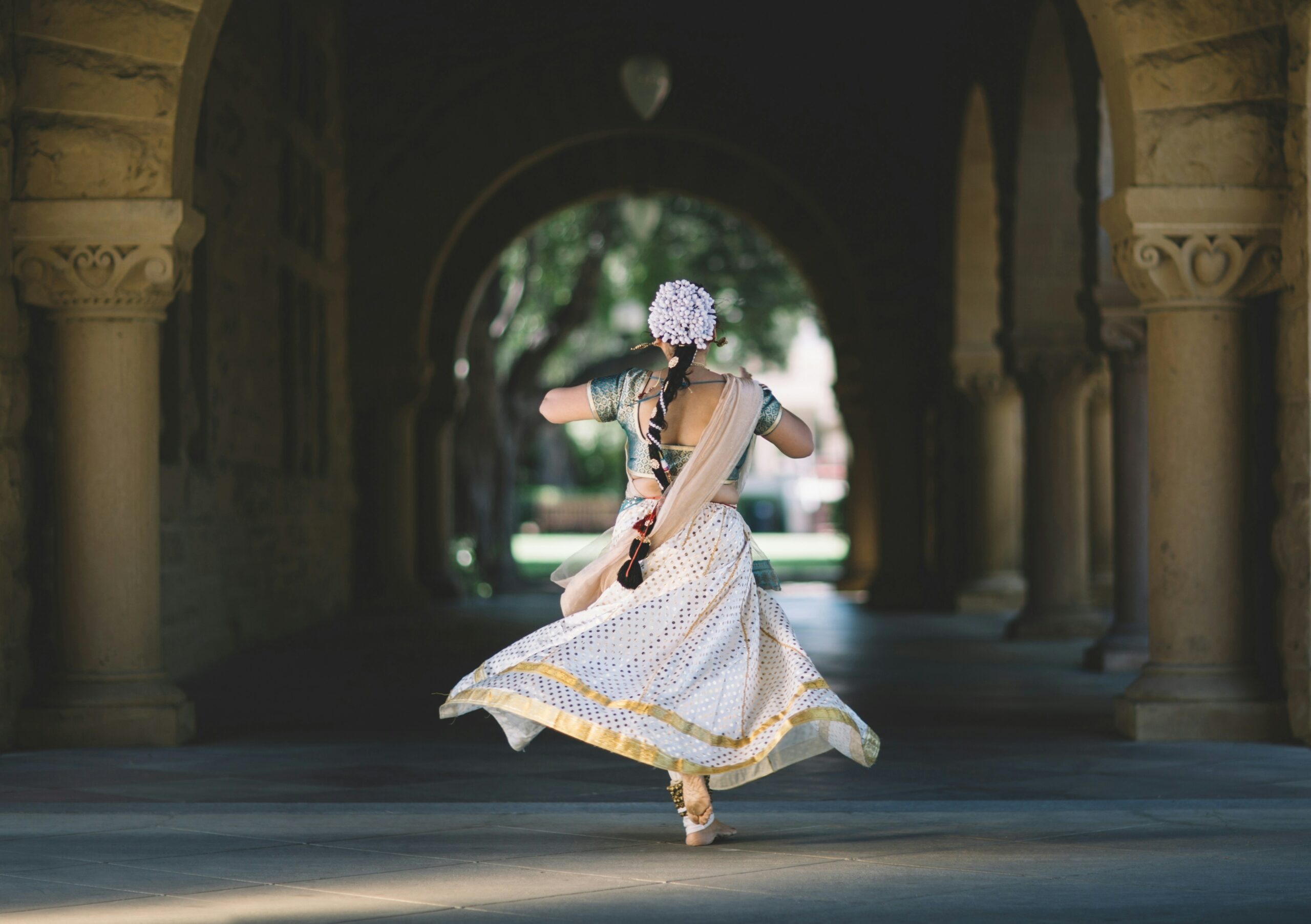
5. Cultural sensitivity and Ethical considerations
While capturing the vibrancy and excitement of Indian dance, it’s essential to navigate the space with cultural sensitivity and ethical considerations. Ensure that your presence as a photographer does not disrupt the sanctity of the performance or the experience of the audience. Be mindful of the moments you choose to capture, ensuring they are respectful and accurately represent the art form.
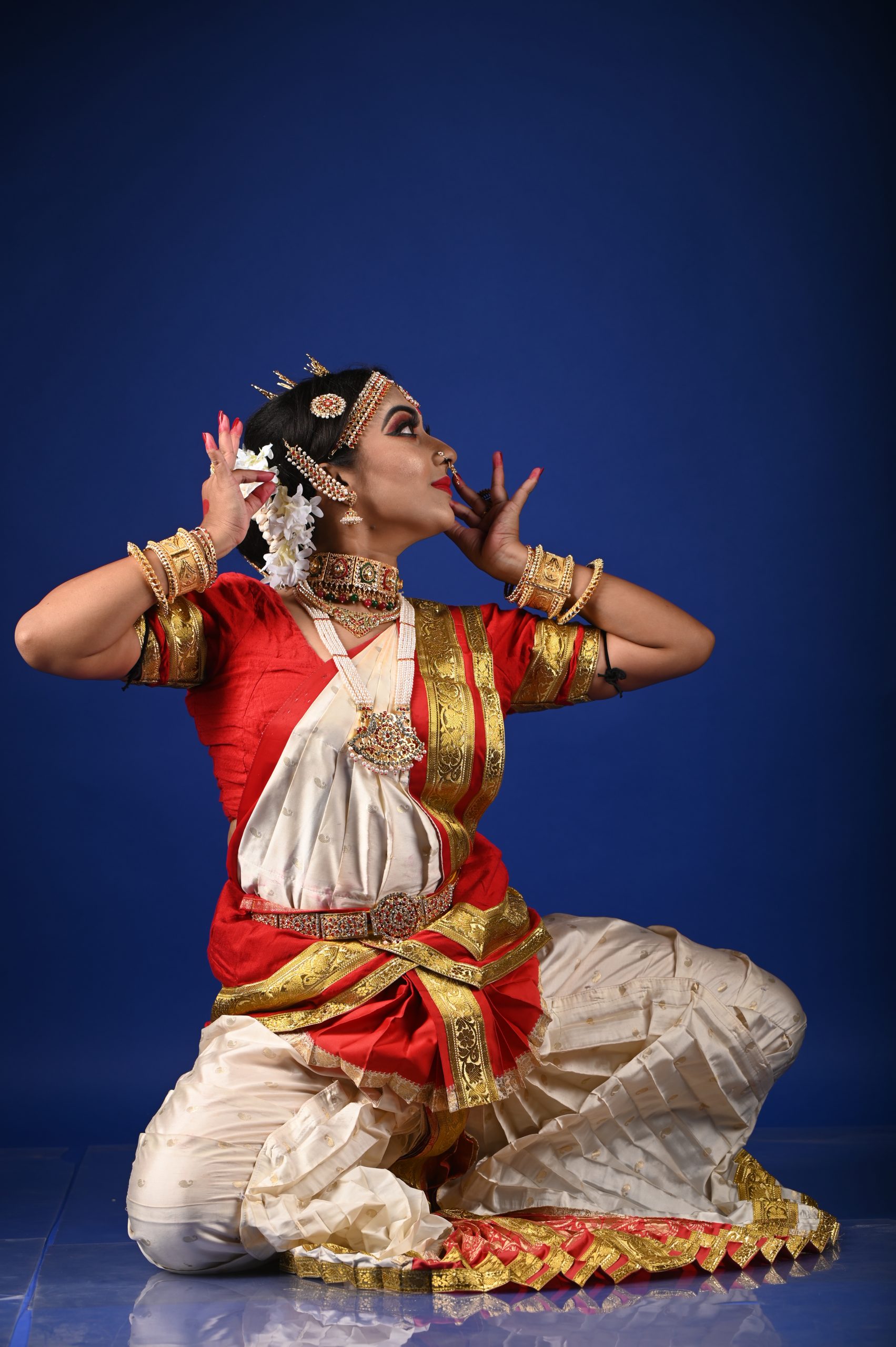
6. Post-Processing
Post-processing is an integral part of dance photography, allowing you to fine-tune the lighting, contrast, and colours of your images. However, maintain the authenticity of the moment and the integrity of the dance form. Avoid over-processing to the point where the image no longer represents the reality of the performance.

7. Engaging with the Community
Engage with the dance community. Share your photos with the dancers and choreographers, and seek feedback. This not only helps build relationships, but also provides insights into how you can better capture their art. Additionally, understanding the stories behind the dances can deepen your appreciation and improve your photographic narrative.

8. Continuous shooting and anticipation
Anticipation: Dance is about rhythm and predictability. By understanding the rhythm of the dance, you can anticipate moments before they happen, positioning yourself and adjusting your settings ahead of time.
Continuous shooting: Use your camera’s continuous shooting mode (burst mode) to capture sequences of movements. This increases your chances of capturing the peak action or the perfect expression, especially in fast-paced performances.

9. Use of Monochrome to highlight emotion
Monochrome Photography: Sometimes, colour can be a distraction, or you may want to emphasise emotion, texture, and contrast. In such cases, consider shooting in black and white. Monochrome can add a timeless quality to your images and focus attention on the subject’s emotion and form.

10. Experimenting with Silhouettes and Shadows
Silhouettes and Shadows: Experiment with backlighting to create silhouettes of dancers, highlighting the shapes and forms of their movements. Shadows cast by dancers can also add an artistic and dramatic element to your photographs, creating a sense of mystery and intrigue.

11. The importance of Rehearsal Photography
Rehearsal Shoots: Attending rehearsals offers a unique opportunity to capture the raw, unpolished moments of dance preparation. It also allows you to experiment with angles, settings, and compositions without the pressure of a live performance. Rehearsal photography can capture the dedication and hard work behind the scenes, adding depth to your dance photography portfolio.
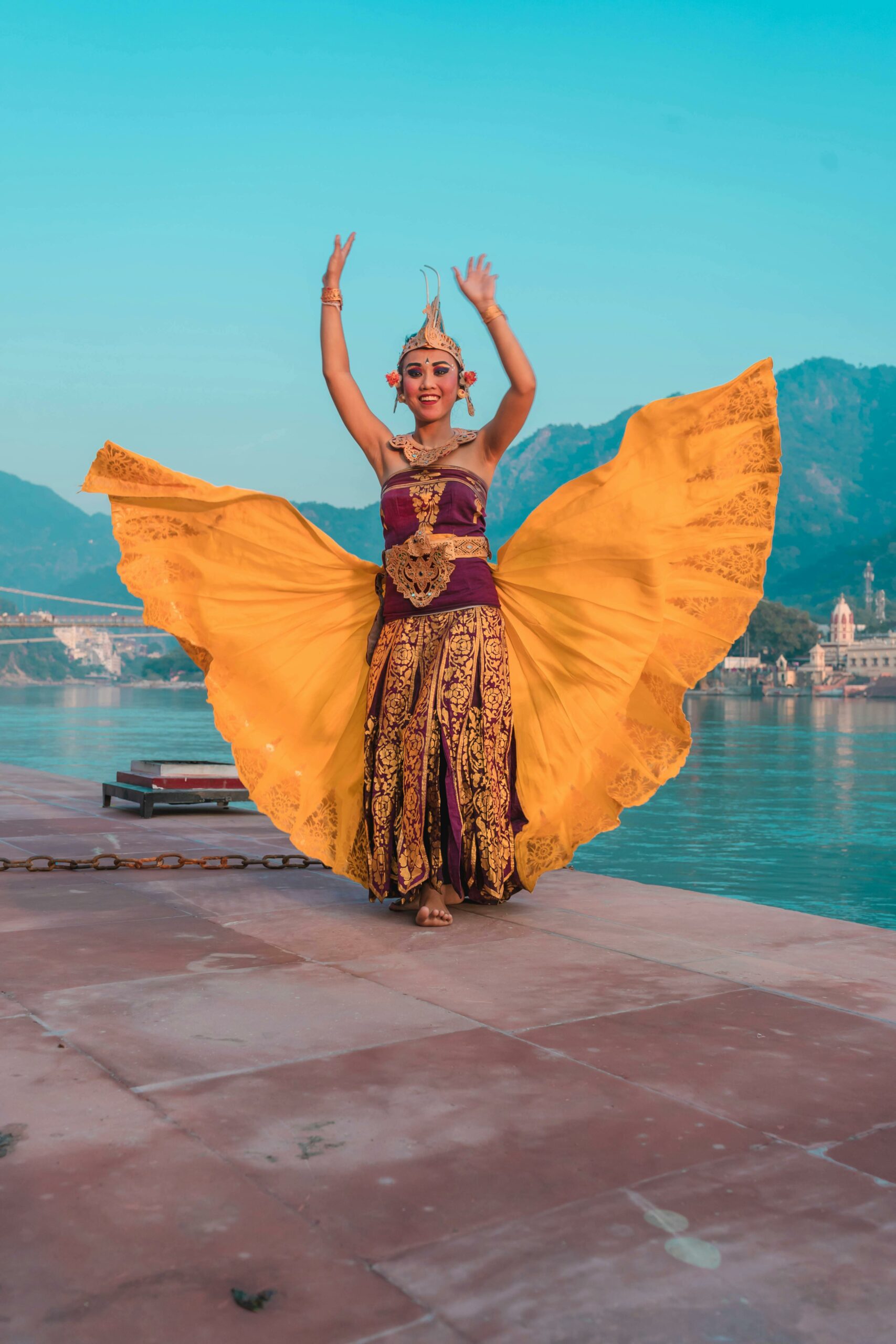
12. Incorporating environmental elements
Environmental context: Especially with outdoor performances or in traditional settings, incorporating environmental elements can add context and a sense of place to your photographs. The surroundings can tell a story about the culture, the people, and the origin of the dance form.
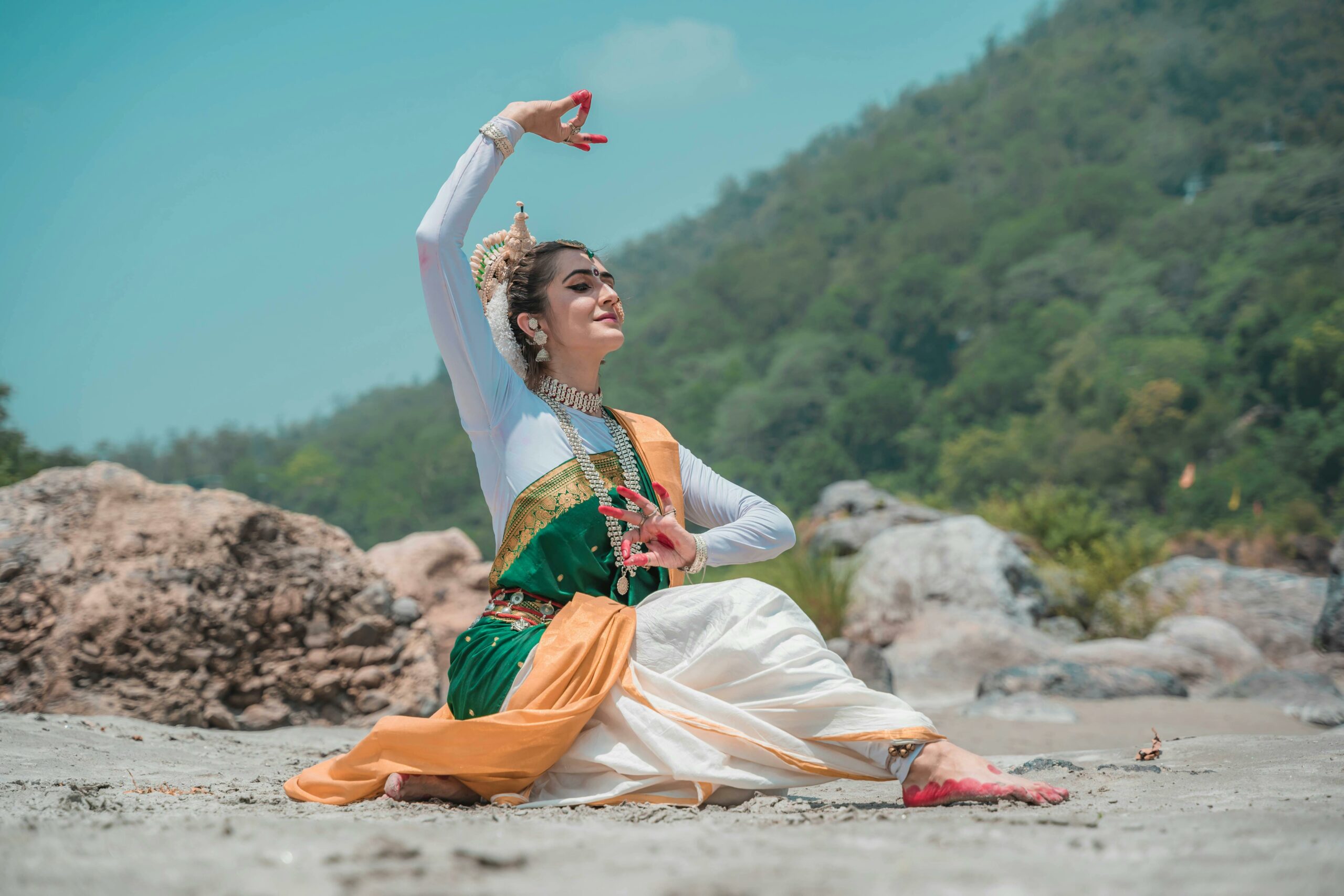
13. Focus on costumes and accessories
Costumes and Accessories: Indian dance costumes are often vibrant, detailed, and an integral part of the dance narrative. Pay attention to capturing the textures, colours, and movements of costumes and accessories, as they add a significant visual element to your photographs.
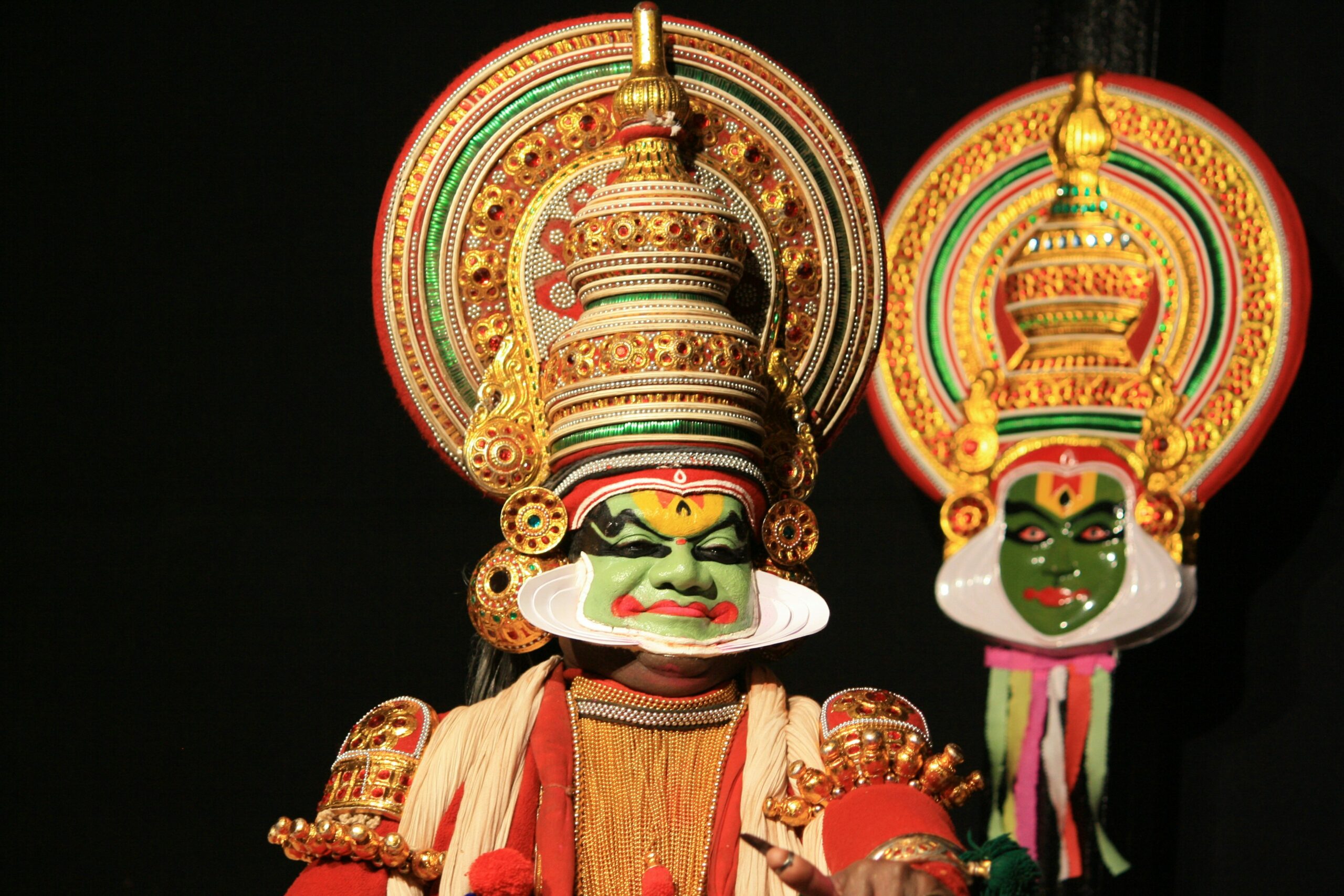
14. Legal and Ethical Considerations for Publishing
Permissions and Rights: Before publishing or sharing photographs, especially for commercial use, ensure you have the necessary permissions from the performers and organisers. Be aware of copyright laws and respect the intellectual property rights of the dancers and choreographers.
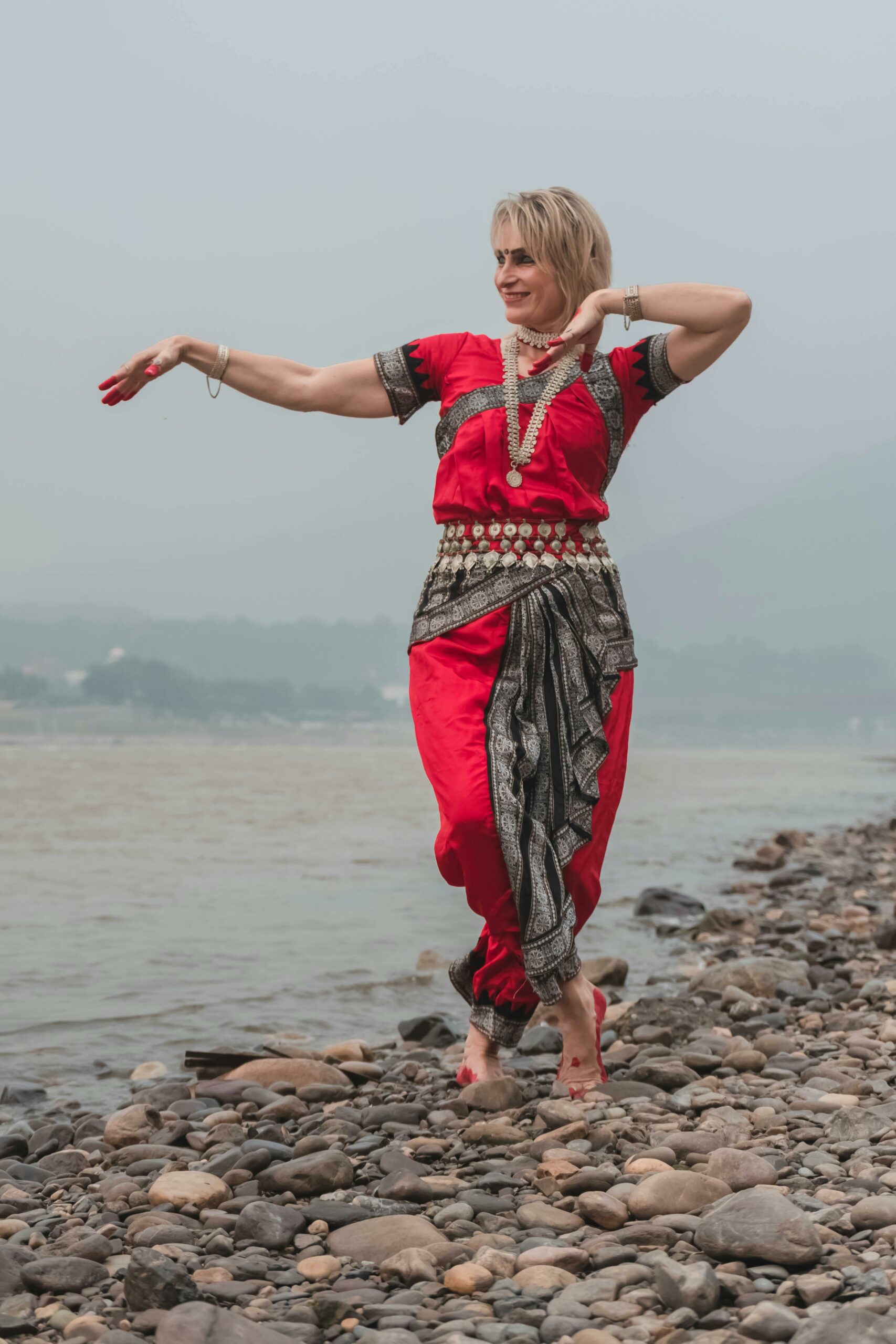
15. Building a Narrative Series
Narrative Series: Instead of standalone shots, consider building a series of images that together tell a story. This could be the progression of a dance, behind-the-scenes preparations, or a thematic series that explores a particular aspect of the dance tradition. A narrative series can provide a more profound insight into the subject matter and engage your audience on a deeper level.
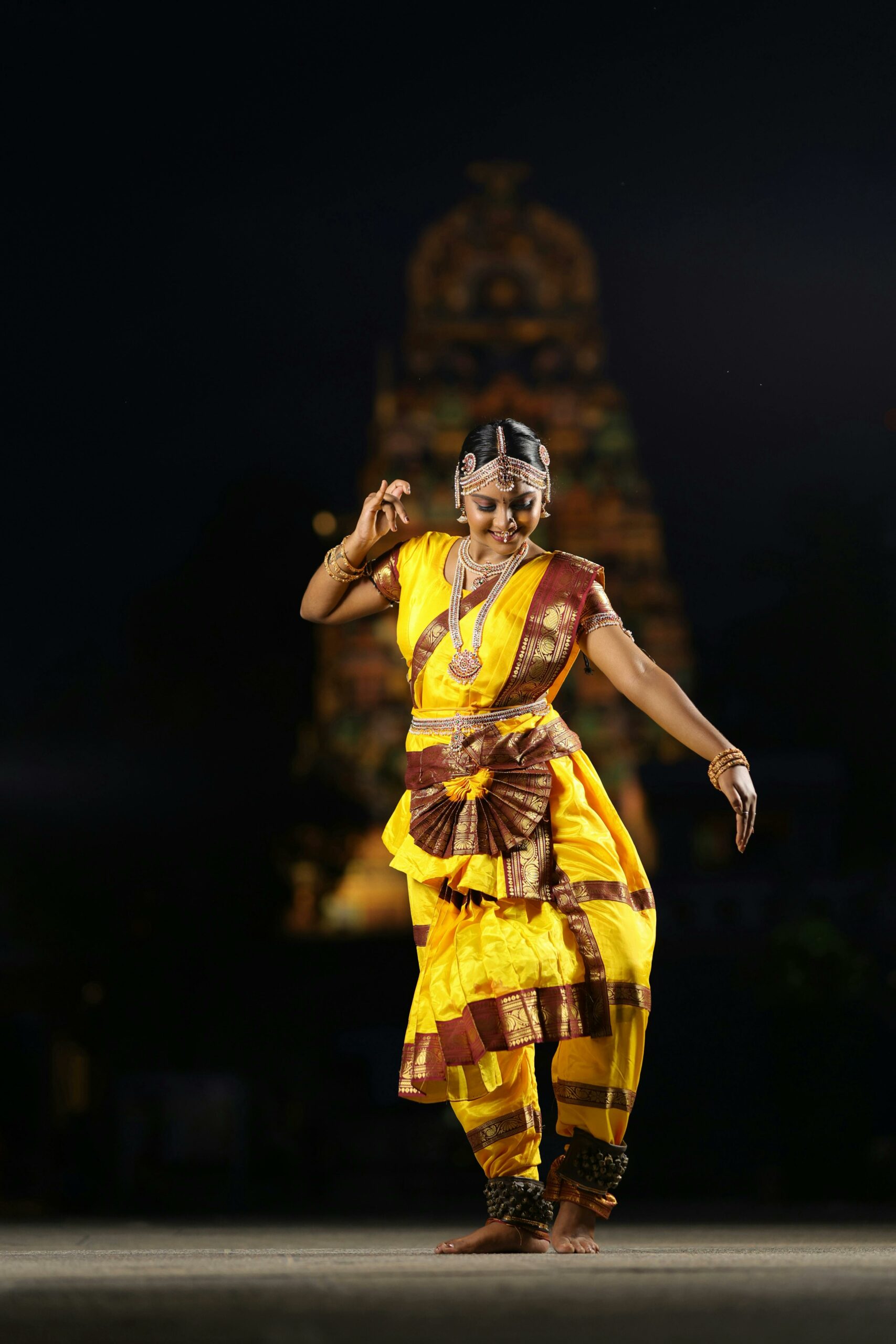
Mastering the art of dance photography, particularly within the diverse and rich cultural landscape of India, is a journey of continuous learning and adaptation. Each of the points highlighted in this guide serves as a stepping stone towards capturing the essence, emotion, and beauty of Indian dance. As you grow in your craft, remember that the heart of photography lies in observation, connection, and storytelling. Embrace each opportunity to photograph dance as a chance to explore the intricate blend of movement, tradition, and culture, always striving to do justice to the art form and its practitioners.
– Sanchit Mishra

